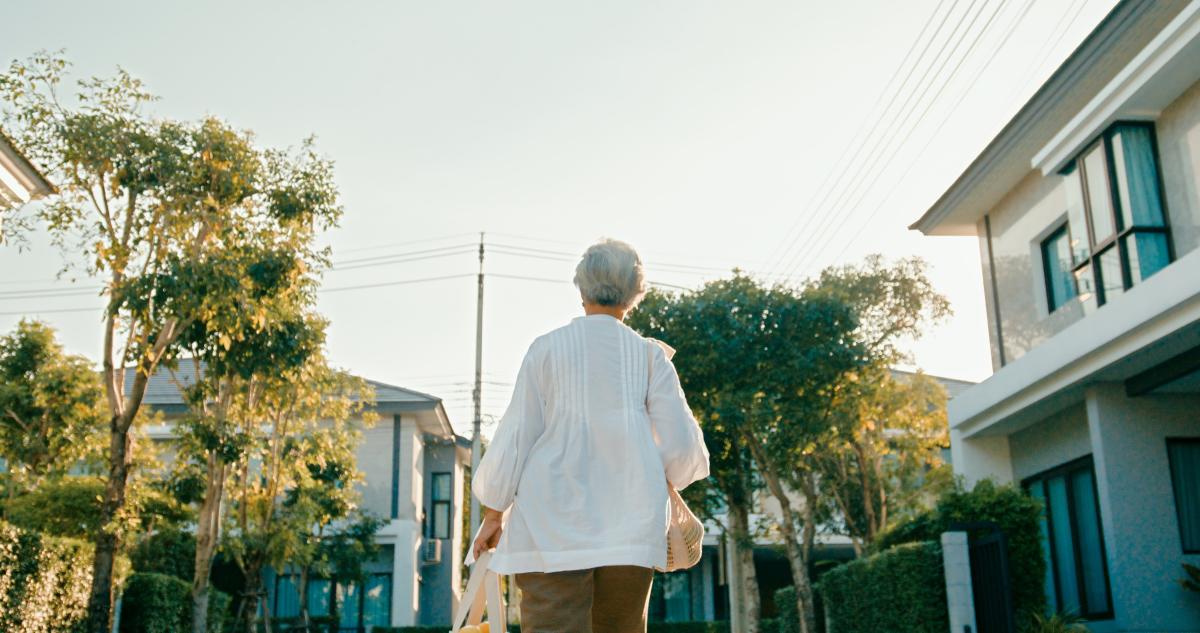Each year, a slew of annual surveys are released declaring that select neighborhoods are the healthiest and fittest in the country. The criteria for these varies by publication and brand, but plenty of people love scanning the reports to see where their neighborhood falls on the list.
While these lists are a novelty to some, where we live does impact our health — whether it’s the sound of passing trains that keeps you up at night, or the tree-lined sidewalks and local jogging trails that make it easy to exercise (or simply go for a pleasant stroll around the block). There are researchers who study the factors that make a neighborhood (and by default, its residents) healthy, and everything from access to green spaces to the amount of traffic in your area matters.
What counts most when it comes to keeping locals happy, fit and healthy? Here’s what you should be looking for.
Plenty of green spaces
Green spaces generally include things like parks, trails or grassy areas that are designated for people to enjoy. These are crucial for a variety of reasons, Henry Louis Taylor, director of the Center for Urban Studies at the University at Buffalo, tells Yahoo Life. “The most important purpose a green space plays is the purification of the air, and mitigating pollutants that are in the air,” he says.
But lack of green space or sparse tree coverage can raise the risk of air and noise pollution, Taylor says. “That can increase levels of stress,” he says.
Green spaces also encourage people to be physically active, which is known to lower the risk of developing a host of serious health conditions, including obesity, type 2 diabetes and cardiovascular disease, Dr. Adnan A. Hyder, professor and senior associate dean for research and innovation at the George Washington University Milken Institute School of Public Health, tells Yahoo Life.
High walkability
Being able to walk around your community can have a big impact on your health, Hyder says. “One of the biggest causes of death and disability in the U.S. is noncommunicable diseases like heart disease,” he says. “And one of the biggest risk factors for them is lack of exercise.”
Anything that encourages people to exercise is helpful, Hyder says. “Walking is fundamental to that,” he adds, noting that clearly lit walking paths allow people to feel safe, making them more likely to use them. “We have found that cities that promote walkability and design walkability in their infrastructure do much better in terms of health,” Hyder says. “The World Health Organization has made promoting walking in urban spaces a key recommendation for cities around the world.”
Minimal traffic
There are two major factors to consider with traffic: safety and pollution. “One of the biggest complaints we get in inner-city communities is cars flying through neighborhoods at high rates of speed,” Taylor says. “People can get hit or injured, and parents stress about their kids if they’re outside getting too close to the street.”
Higher levels of traffic also mean more air pollution in a community, Hyder points out. “One of the key elements of air pollution is exhaust fumes from cars,” he says. Traffic can also contribute to noise pollution, raising the risk of sleep issues, high blood pressure and hearing loss, according to the Environmental Protection Agency (EPA).
Clean air
Air pollution has been linked to several serious health conditions, including cardiovascular disease and cancer. Air pollution can also make it harder for people with asthma and other respiratory conditions to breathe, according to the Centers for Disease Control and Prevention (CDC). Particle pollution has even been linked to heart attacks, strokes and death in people with heart disease.
Neighborhoods will usually track air quality through the Air Quality Index, or AQI, a color-coded system that tells local residents their risk of potential health issues from the air’s quality.
Low crime rates
Crime has an obvious impact on health in terms of safety. But the fear of crime can have a big effect on health too. “It causes people to stay indoors as opposed to outdoors,” Taylor says. “Crime will keep people from jogging, walking and moving around the neighborhood.”
High levels of crime are also stressful for residents. “The slightest noise wakes them up for fear of a house invasion and it intensifies feelings of stress,” Taylor says. “It leads to toxic stress, which is an enormous health barrier.”
Good access to education
Having free, quality schooling is crucial for health, Taylor says. “The ability to read means that you’re more likely to read the nutritional label and know which foods are good and bad,” he says. Having a baseline knowledge of health is also crucial for doctor’s appointments, Taylor says. “When you don’t understand what the doctor is saying to you, it puts you in harm’s way,” he explains.
People with a minimal education are also not as competitive in the job market, Taylor says. “That means you’ll end up in the low-income wage sector and will have a limited amount of resources to purchase good housing or high-quality foods — and that’s not going to be good for your health,” he says.
Quality health care
This aspect is “fundamental” to the health of a neighborhood, Hyder says. When a hospital closes in an area, “access to health care is severely affected,” he says. That can lower the odds that someone will seek care if they need it, and make it less likely that they’ll get help in time in an emergency. Having easily accessible doctor’s offices is also crucial for preventive care and overall health care. “The balance of health care resources is really important,” Hyder says. “That affects neighborhood health for obvious reasons.”
Overall, experts stress the importance of a neighborhood’s features in the health of its residents. “You cannot improve health without transforming neighborhoods,” Taylor says. “You can try, but you will fail.”

